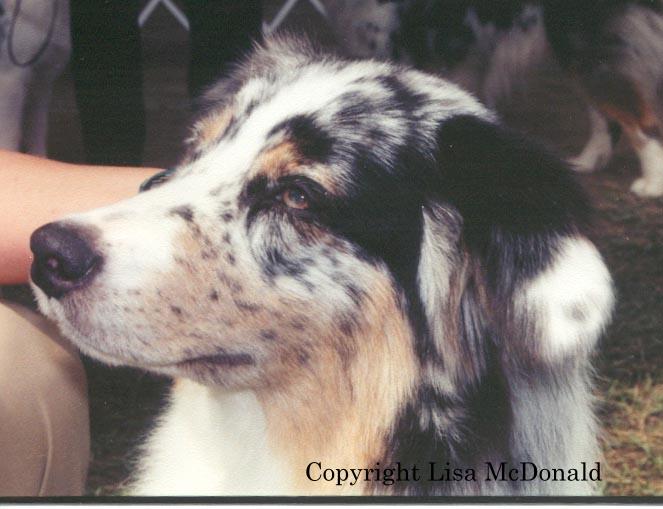
The tan point pattern is very prevalent in Aussies, and it varies considerably in its coverage. Some individuals have no apparent tan points at all, and some have huge amounts of tan that resemble a coppery mask on the face. Some individuals have smudges of their body color on the tan areas of the toes and muzzle (smutty tan points). In some dogs the tan coverage is crisp and complete like a Doberman, and in others the tan points bleed into the body color (running copper). The actual color of the tan points can vary from a creamy sand to a deep copper. If you're uncertain whether a dog has tan points or not, check under the tail. The tan mark surrounding the anus is the very last part of the tan point pattern to disappear if the marks are seriously reduced. I currently do not have a photo showing the tan markings under the tail of an adult, but I'd be glad to add one.

Wessacre Blue Crystal shows average coverage of the tan point pattern. Her tan areas are a light sand color, at the lighter end of the darkness spectrum. Her shepherd spots above the eyes are slightly darker. Some merle spotting overlaps the tan area on her muzzle. This would be an example of running copper, where the body color and the tan area overlap to some degree.
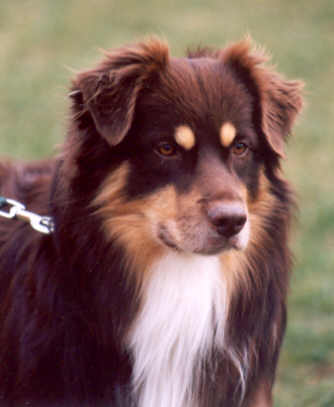
This is SRN Eagle Red Hot Masquerade DNA-VP CD VDH-BH VDH-O2 (Balu) from Germany, photo courtesy of Susanne Oehler. He displays a very crisp tan point pattern like you'd see on a Doberman or Rottweiler. Those distinct shepherd spots above the eyes really enhance a dog's changing expressions as they change position relative to each other.
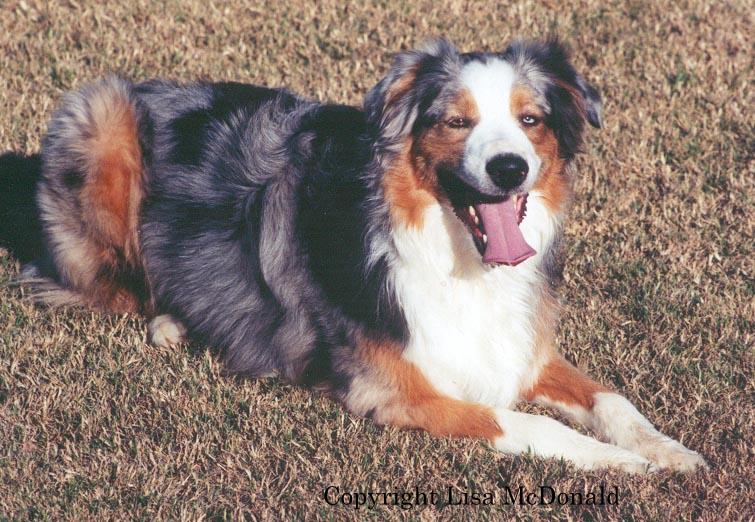
Mary Fillerup's "Tanner", a Heartfire boy, has very extensive tan points. They reach his stifles, and the eye spots meet the cheek patches to form a tan mask. Tanner's points are very rich and coppery, showing a rich depth of color. The standard does not discriminate between light and dark tan points. All are acceptable.

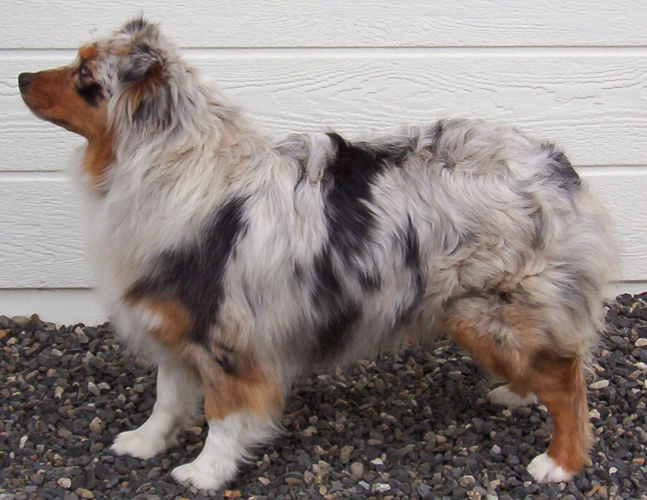
This is Shady, photos courtesy of Steve Crowder. She is a very light blue merle, but her tan points are as dark and rich as those on a Rotti. Tan points do not necessarily match the darkness of the dog's coat. Some blacks have sand colored tan points, and some very light merles have dark ones. All are equally correct with respect to color.

Leona Stabler's "Jake" shows a reduced tan point pattern. He has no eye spots and has only a few tan hairs on his muzzle. The tan areas on his legs and toes are very smutty. Some dogs have only a tan spot under the tail; that is the last place the tan point pattern is seen when it is not in evidence elsewhere. Suspected bicolors should be checked under the tail to be sure they are not tricolors with minimal expression of the tan point pattern. The standard does not make a preference between extensive tan points and very minimal tan points.

This puppy shows the smutty effect on his tan point pattern. The black penciling on his toes and the black smudges on his muzzle are produced by modifiers. On a red dog the smudges and penciling would be red. This is not to be confused with brindle. Brindle is a distinct tiger striping pattern, not just an indistinct collection of dark hairs.

This is what happens when you combine smutty tan points with merling! Instead of simply having black smudges like the puppy above, this dog also has smudges of merle on his tan points.


This puppy is Gina (Knoktai Start Your Engines), photos courtesy of Sheila Leonard. She is shown at 2 weeks of age (left) and 9 weeks of age (right). In most Aussie pups that have the tan point pattern the tan points are clearly visible at birth. But sometimes, in some bloodlines, the tan points are not visible at birth and can emerge and change color as a puppy develops. At 1 day old, Gina had no tan points in evidence at all, except directly under the tail. But for that one spot, she would have been identified as a black bi. By the time Gina was 2 weeks old, her tan points had started bleeding through the body color and had a distinct bluish appearance. By 9 weeks of age, she has normal light sand colored tan points with no trace of the early blue shade. At first glance the emerging bluish tan points can make one think of blue merle, but merle is random in distribution and these blue areas clearly are limited to the location of the tan point pattern. A little age and development bore this out. Because she also has the E locus mask, the tan on her muzzle and the shepherd spots that would normally be above her eyes are not seen. The mask covers them.

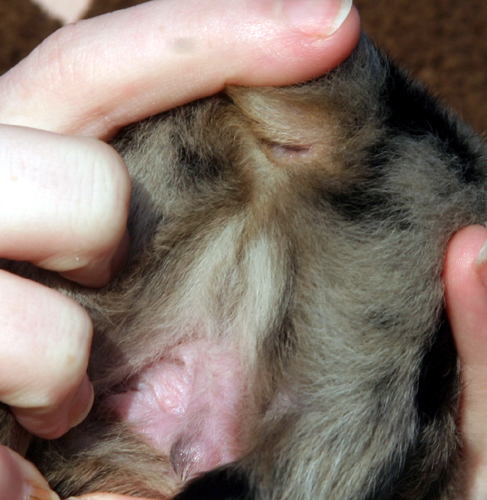
These puppies are not yet named, photos courtesy of Brett Winn. If you just can't be sure if a pup (or adult) has tan points or not, check under the tail. If the tan point pattern is present, it will show here. The pup on the left has very light sand colored tan points. The pup on the right, from the same litter, has darker more coppery tan points. Right now they are visible only under the tail. They may or may not become more noticeable in other areas of the body and face as the puppies grow.
© 1999-2009 Lisa McDonald Comments